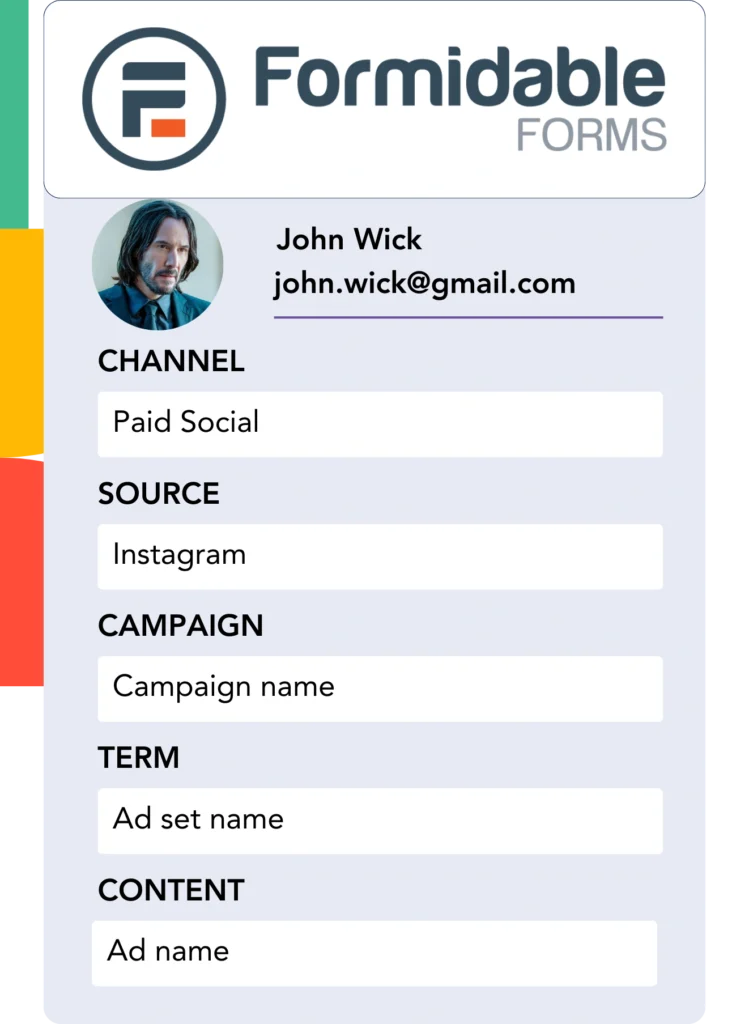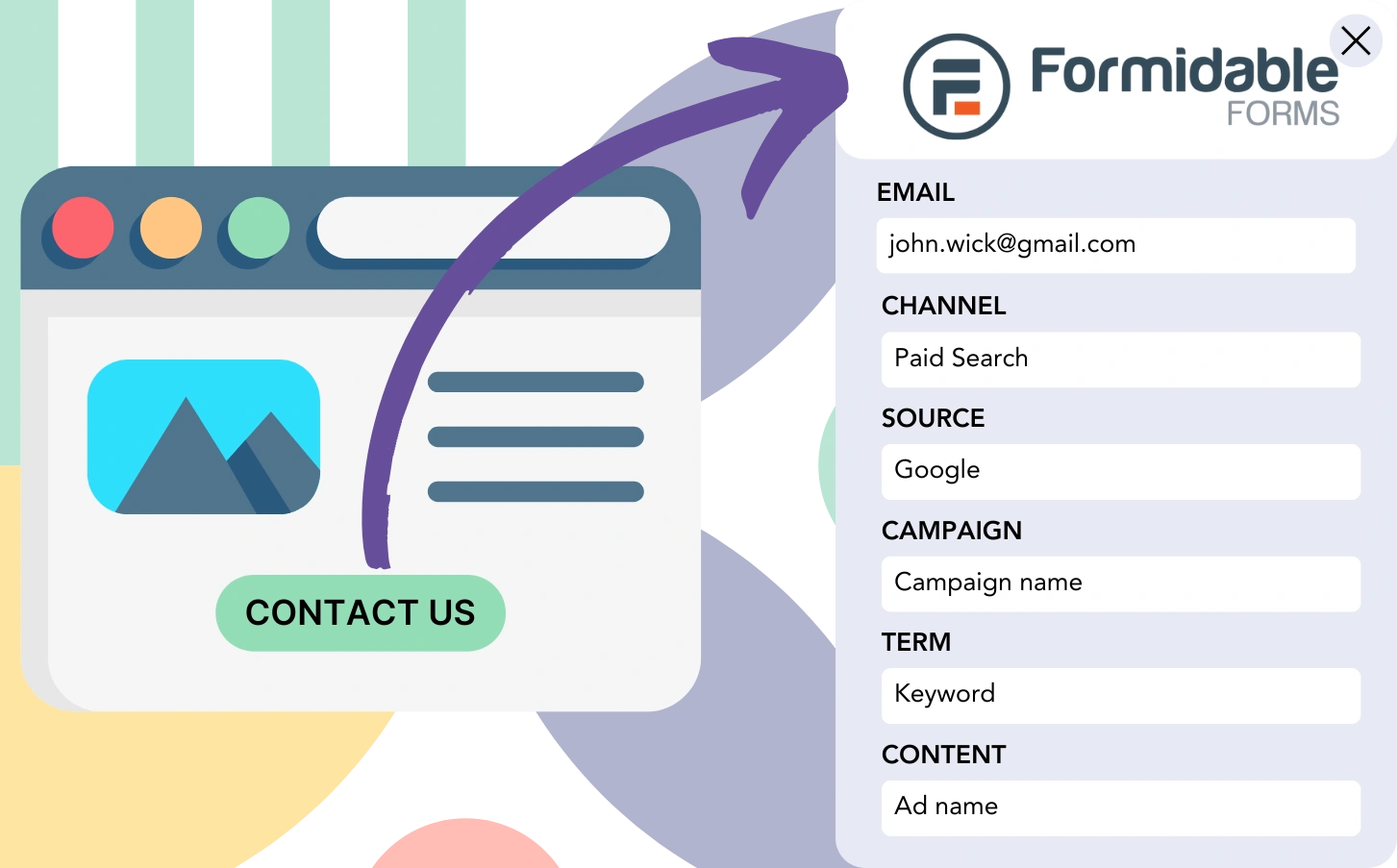Is your lead data from Formidable Forms leaving you uncertain about the source of each lead?
Similarly, after a lead turns into a customer, the originating channel or ad cannot be determined.
Lacking effective tracking, your ability to measure marketing performance and discover which sources are driving leads, sales, and revenue is severely limited. This knowledge gap often results in unnecessary spending on poorly performing channels.
Luckily, a proven solution exists to connect each lead and sale to their exact source channel, campaign, keyword, and ad.
Let’s dive into it!
How to track the source of leads in Formidable Forms
Step 1: Add Leadsources in your website

Leadsources is a practical tool that simplifies the process of tracking leads. By embedding it into your website, it identifies up to 7 essential lead source data points for each new lead:
- Channel
- Source
- Campaign
- Term
- Content
- Landing page
- Landing page subfolder
➡️ Sign up to Leadsources.io for free
➡️ Add the Leadsources tracking code to your site
Step 2: Add the hidden fields in Formidable Forms

Hidden fields are elements in a form that remain unseen by the user but store data submitted with the form.
Leadsources tracks lead sources through hidden fields. When the form is submitted, these fields are automatically filled with the lead source information.
Step 3: Send lead source data to your CRM (optional)

Lead source data from your form builder can be integrated with your CRM.
Your CRM provides insights into the sources of your leads, sales, and revenue.
You can directly correlate your marketing strategies with your sales performance.
How does Leadsources work?
As soon as a visitor arrives on your website, Leadsources retrieves the lead source information and populates the hidden fields in your Formidable Forms. After the form is submitted, the lead details, including name and email, are sent to Formidable Forms.
With Leadsources, the source data for every lead is tracked and recorded:
| Lead source data | Fetched automatically |
| Channel | ✅ |
| Source | ✅ |
| Campaign | ✅ OR use UTM_campaign |
| Content | UTM_content parameter is required |
| Term | UTM_term parameter is required |
| Landing page | ✅ |
| Landing page subfolder | ✅ |
When UTM parameters cannot be applied—such as with organic Google search traffic or mentions in articles—Leadsources still records and tracks the key lead source data, providing accurate and comprehensive tracking:
✅Channel
✅Source
✅Campaign
✅Landing page
✅Landing page subfolder
Leadsources captures lead source data from all marketing channels, both organic and paid, unlike other solutions.
Pro tip:
LeadSources is compatible with all popular online form builders: Cognito Forms, Gravity Forms, Jotform, Typeform, WPForms, and more. Check out all our integrations.
Performance reports: Lead, sales, and revenue by source
Tracking lead sources in your CRM allows you to develop performance reports that include:
- Leads, sales, and revenue by channel
- Leads, sales, and revenue by source
- Leads, sales, and revenue by campaign
- Leads, sales, and revenue by term (e.g. keyword or adset)
- Leads, sales, and revenue by content (e.g. ad)
- Leads, sales, and revenue by landing page
- Leads, sales, and revenue by landing page subfolder
This helps you to focus on your marketing budget on channels, sources, campaigns, terms, content, etc., that produce the best results in terms of leads, sales, and revenue.
Let’s look into some of the reports you can create.
1. Lead source reports
Create reports that give insights into the number of leads generated by:
- Channel
- Source
- Campaign
- Term (e.g. keyword or adset)
- Content (e.g. ad)
- Landing page
- Landing page subfolder
Example #1: Leads by channel
This report provides a breakdown of which channel generates the most leads.

Example #2: Leads by campaign
Now, you can keep track of a specific lead source, such as Facebook ads, and measure the number of leads from each campaign with the help of the UTM campaign tracking.

Example #3: Leads by keyword and ad
After identifying the campaign that drives the most leads, you can explore which keyword or ad is driving those leads by using the term or content UTM parameters.

2. Sales source reports
Now that we know which channels, sources, campaigns, terms, and content are producing leads, we must determine if these leads are generating sales and revenue.
Send your leads directly to your CRM. This will enable you to track the sources of your sales and revenue, from channels to sources, campaigns, terms, content, landing pages, and subfolders.
Using this information, you can adjust your marketing strategy to better focus on the channels, sources, campaigns, keywords, and ads that bring in the most sales and revenue.
Create detailed reports to track sales and revenue performance, including:
- Sales and revenue by channel
- Sales and revenue by source
- Sales and revenue by campaign
- Sales and revenue by term (e.g. Keywords)
- Sales and revenue by content (e.g. Ads)
- Sales and revenue by landing page
- Sales and revenue by landing page subfolder
Here is an example to guide you:
| Channels | Search Paid | Social Paid |
| Leads | 50 | 75 |
| Sales | 5 | 6 |
| Average order value | $150 | $100 |
| Revenue | $750 | $600 |
Upon launching Google Ads and Facebook Ads Manager campaigns, the first “Leads by Channel” report showed that Facebook ads performed better in lead generation than Google’s search ads.
Upon reviewing the sales and revenue data in your CRM, you discovered that the Search Paid channel generated more revenue with fewer leads compared to the Social Paid channel. Based on this valuable insight, you adjusted your budget to focus more on the Search Paid channel.

